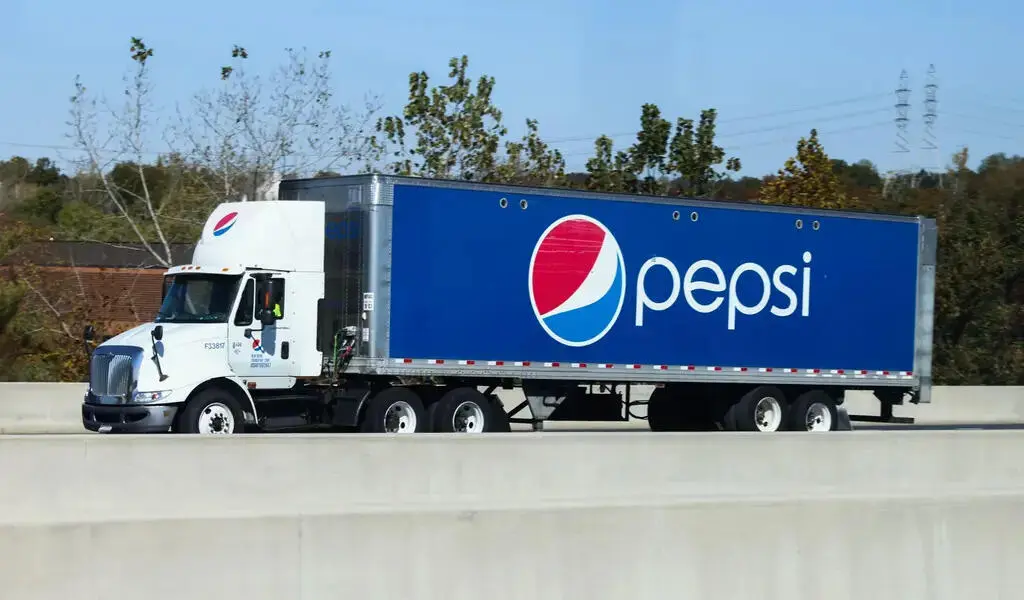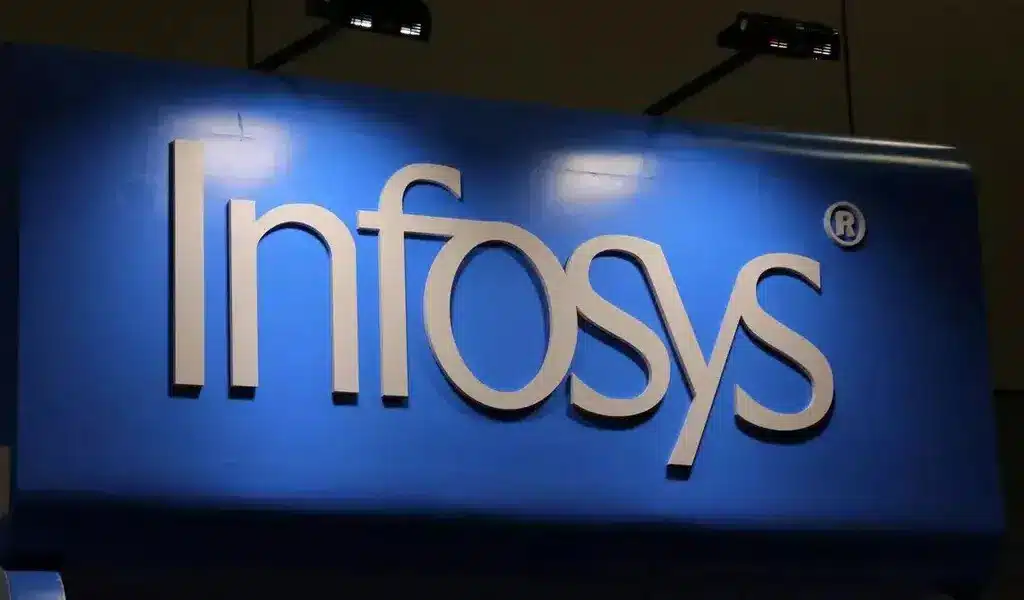Business
Risk Management Framework: Key Elements & How To Implement It?

(CTN NEWS) – Risk management is an essential process that organizations must undertake to identify, assess, and mitigate potential risks.
Without a robust risk management framework, businesses are vulnerable to a range of threats that can disrupt operations, damage reputation, and erode profitability.
What is a Risk Management Framework?
A risk management framework provides a structured approach to managing risk, outlining the policies, procedures, and guidelines that organizations can use to identify, assess, and mitigate potential risks.
It is a crucial tool for businesses looking to navigate the complex and ever-changing risk landscape and achieve long-term success.
In this article, we will explore the key elements of a risk management framework, its benefits.
Why is Risk Management Framework important for your business?
Implementing a Risk Management Framework is critical for businesses because it helps them:
- Identify and assess potential risks to their business, including financial, operational, and strategic risks.
- Prioritize risks based on their likelihood and impact on the business.
- Develop and implement effective risk mitigation strategies.
- Monitor risks and adjust risk mitigation strategies as needed.
- Ensure compliance with relevant laws and regulations.
- Protect their assets and reputation.
By having an effective RMF in place, businesses can avoid or mitigate potential risks and protect themselves from financial loss, legal issues, and reputational damage.
It also helps them make informed decisions and allocate resources effectively.

Key Elements of Risk Management Framework
A risk management framework comprises several elements that work together to enable effective risk management. These elements include:
Risk Identification
Risk identification involves identifying potential risks that could impact the organization’s objectives.
This process involves conducting a thorough analysis of the internal and external environment, identifying vulnerabilities, and assessing the likelihood and potential impact of identified risks.
Risk Assessment
Risk assessment involves evaluating the identified risks to determine their potential impact and likelihood of occurrence.
This process enables organizations to prioritize risks based on their significance and develop mitigation strategies accordingly.
Risk Mitigation
Risk mitigation involves developing and implementing strategies to reduce the likelihood and potential impact of identified risks.
This process may involve implementing controls, transferring risk, avoiding risk, or accepting the risk.
Risk Monitoring and Review
Risk monitoring and review involve continuously monitoring and reviewing the effectiveness of risk management strategies.
This process enables organizations to adapt their risk management strategies to changing risk environments and ensure that they remain effective over time.
Importance of Risk Management Framework

A risk management framework is essential for organizations looking to navigate the complex and ever-changing risk landscape. Here are some reasons why a robust risk management framework is crucial for organizations:
Mitigate Potential Risks
A risk management framework enables organizations to identify and assess potential risks and develop strategies to mitigate their impact.
By implementing effective risk management strategies, organizations can reduce the likelihood of significant losses, disruptions, and reputational damage.
Protect Business Assets
A risk management framework helps organizations protect their critical business assets, including data, people, and physical assets.
By identifying and mitigating potential risks, organizations can safeguard their assets and ensure business continuity.
Compliance Requirements
Many industries and regulatory bodies require organizations to have a robust risk management framework in place. Failure to comply with these requirements can result in significant fines, legal liabilities, and reputational damage.
Better Decision Making
A risk management framework provides organizations with valuable insights into potential risks and their impact on business objectives.
This information enables organizations to make better-informed decisions, allocate resources effectively, and achieve long-term success.
How to Implement a Risk Management Framework
Implementing a Risk Management Framework can be a complex and time-consuming process, but it’s essential for protecting your business. Here are the steps to implement an effective RMF:
- Define Your Risk Management Objectives: Identify your business’s goals, risk appetite, and tolerance for risk. Determine what you want to achieve with your RMF.
- Identify Your Assets: Identify your business’s assets, including physical assets, information assets, and human assets.
- Identify Potential Risks: Identify potential risks to your business based on the assets you have identified. This can include financial risks, operational risks, reputational risks, and more.
- Assess Risks: Assess the likelihood and potential impact of each identified risk. This will help you prioritize risks and develop appropriate risk mitigation strategies.
- Develop Risk Mitigation Strategies: Develop and implement risk mitigation strategies based on the results of your risk assessment. This can include strategies to avoid, transfer, reduce, or accept risks.
- Monitor and Review: Monitor and review your RMF regularly to ensure that your risk mitigation strategies are effective and appropriate. This can include regular risk assessments, monitoring of risk indicators, and review of risk management policies and procedures.
- Communicate and Report: Communicate information about risks and risk mitigation strategies to relevant stakeholders, including employees, customers, and regulators. Reporting should be timely, accurate, and transparent.
- Review and Update: Review and update your RMF regularly to ensure that it remains effective and relevant to your business’s needs. This can include updating risk assessments, revising risk mitigation strategies, and reviewing and updating risk management policies and procedures.
Conclusion
In today’s dynamic business environment, managing risks is crucial for the success and sustainability of any organization.
A well-designed and implemented Risk Management Framework can help businesses identify, assess, and mitigate potential risks, making informed decisions and protecting their interests.
By following a structured approach to risk management, businesses can proactively manage risks and reduce the likelihood of unexpected events causing harm to their operations, reputation, and financial health.
Regular monitoring and review of the RMF, along with effective communication and reporting, can ensure that risk management practices remain relevant and effective in addressing changing business risks.
In conclusion, a robust Risk Management Framework is essential for businesses to effectively manage risks and safeguard their interests in today’s uncertain business landscape.
By integrating risk management into their operations and decision-making processes, businesses can be better equipped to navigate challenges and seize opportunities, ultimately enhancing their resilience and success
So, invest in a comprehensive Risk Management Framework, and protect your business from potential risks that may arise in the ever-evolving business landscape.
RELATED CTN NEWS:
Resident Evil 4 Remake All Challenges List (& How To Complete Them)
Business Risk: 6 Main Types Of Business Risks & Mitigation Strategies
8 Best CRM Software For Small Business In 2023 [+Features & Pricing]

Business
PepsiCo Reduces Revenue Projections As North American Snacks And Key International Markets Underperform.

(VOR News) – In the third quarter of this year, Pepsi’s net income was $2.93 billion, which is equivalent to $2.13 per share. This was attributed to the company.
This is in stark contrast to net income of $3.09 billion, which is equivalent to $2.24 per share, during the same period in the previous year. The company’s earnings per share were $2.31 when expenses were excluded.
Net sales decreased by 0.6%, totaling $23.32 billion. Organic sales increased by 1.3% during the quarter when the effects of acquisitions, divestitures, and currency changes are excluded.
Pepsi’s beverage sales fell this quarter.
The most recent report indicates that the beverage and food sectors of the organization experienced a 2% decline in volume. Consumers of all income levels are demonstrating a change in their purchasing habits, as indicated by CEOs’ statements from the previous quarter.
Pepsi’s entire volume was adversely affected by the lackluster demand they encountered in North America. An increasing number of Americans are becoming more frugal, reducing the number of snacks they ingest, and reducing the number of times they purchase at convenience stores.
Furthermore, Laguarta observed that the increase in sales was partially attributed to the election that occurred in Mexico during the month of June.
The most significant decrease in volume was experienced by Quaker Foods North America, which was 13%. In December, the company announced its initial recall in response to a potential salmonella infection.
Due to the probability of an illness, the recall was extended in January. Pepsi officially closed a plant that was implicated in the recalls in June, despite the fact that manufacturing had already been halted.
Jamie Caulfield, the Chief Financial Officer of Pepsi and Laguarta, has indicated that the recalls are beginning to have a lessening effect.
Frito-Lay experienced a 1.5% decline in volume in North America. The company has been striving to improve the value it offers to consumers and the accessibility of its snack line, which includes SunChips, Cheetos, and Stacy’s pita chips, in the retail establishments where it is sold.
Despite the fact that the category as a whole has slowed down in comparison to the results of previous years, the level of activity within the division is progressively increasing.
Pepsi executives issued a statement in which they stated that “Salty and savory snacks have underperformed year-to-date after outperforming packaged food categories in previous years.”
Pepsi will spend more on Doritos and Tostitos in the fall and winter before football season.
The company is currently promoting incentive packets for Tostitos and Ruffles, which contain twenty percent more chips than the standard package.
Pepsi is expanding its product line in order to more effectively target individuals who are health-conscious. The business announced its intention to acquire Siete Foods for a total of $1.2 billion approximately one week ago. The restaurant serves Mexican-American cuisine, which is typically modified to meet the dietary needs of a diverse clientele.
The beverage segment of Pepsi in North America experienced a three percent decrease in volume. Despite the fact that the demand for energy drinks, such as Pepsi’s Rockstar, has decreased as a result of consumers visiting convenience stores, the sales of well-known brands such as Gatorade and Pepsi have seen an increase throughout the quarter.
Laguarta expressed his opinion to the analysts during the company’s conference call, asserting, “I am of the opinion that it is a component of the economic cycle that we are currently experiencing, and that it will reverse itself in the future, once consumers feel better.”
Additionally, it has been noted that the food and beverage markets of South Asia, the Middle East, Latin America, and Africa have experienced a decline in sales volume. The company cut its forecast for organic revenue for the entire year on Tuesday due to the business’s second consecutive quarter of lower-than-anticipated sales.
The company’s performance during the quarter was adversely affected by the Quaker Foods North America recalls, the decrease in demand in the United States, and the interruptions that occurred in specific international markets, as per the statements made by Chief Executive Officer Ramon Laguarta.
Pepsi has revised its forecast for organic sales in 2024, shifting from a 4% growth rate to a low single-digit growth rate. The company reiterated its expectation that the core constant currency profitability per share will increase by a minimum of 8% in comparison to the previous year.
The company’s shares declined by less than one percent during premarket trading. The following discrepancies between the company’s report and the projections of Wall Street were identified by LSEG in a survey of analysts:
SOURCE: CNBC
SEE ALSO:
Old National Bank And Infosys Broaden Their Strategic Partnership.
Business
Old National Bank And Infosys Broaden Their Strategic Partnership.

(VOR News) – Old National Bank, a commercial bank with its headquarters in the Midwest, and Infosys, a firm that specializes in information technology, have recently entered into a strategic expansion of their link, which has been in place for the past four years.
This expansion is more likely to take place sooner rather than later, with the likelihood being higher.
For the purpose of making it possible for Old National Bank to make use of the services, solutions, and platforms that are offered by Infosys, the objective of this expansion is to make it possible for the bank to transform its operations and processes through the application of automation and GenAI, as well as to change significant business areas.
This lets the bank leverage Infosys’ services, solutions, and platforms.
Old National Bank Chairman and CEO Jim Ryan said, “At Old National, we are committed to creating exceptional experiences for both our customers and our fellow employees.”
This statement is applicable to Old National Bank. Infosys is carefully managing the business process innovations that it is putting us through, putting a strong emphasis on efficiency and value growth throughout the process to ensure that it is carried out efficiently.
This is a routine occurrence throughout the entire operation. Because of Infosys’ dedication to our development and success, we are incredibly appreciative of the assistance they have provided.
Old National has been receiving assistance from Infosys in the process of updating its digital environment since the year 2020, according to the aforementioned company.
Ever since that time, the company has been providing assistance. The provision of this assistance has been accomplished through the utilization of a model that is not only powerful but also capable of functioning on its own power.
Infosys currently ranks Old National thirty-first out of the top thirty US banks.
This ranking is based on the fact that Old National is the nation’s largest banking corporation.
It is estimated that the total value of the company’s assets is approximately fifty-three billion dollars, while the assets that are currently being managed by the organization are valued at thirty billion dollars.
Dennis Gada, the Executive Vice President and Global Head of Banking and Financial Services, stated that “Old National Bank and Infosys possess a robust cultural and strategic alignment in the development, management, and enhancement of enterprise-scale solutions to transform the bank’s operations and facilitate growth.”
This remark referenced the exceptional cultural and strategic synergy between the two organizations. Dennis Gada is the one who asserted this claim. This was articulated explicitly concerning the exceptional cultural congruence and strategy alignment of the two organizations.
We are pleased to announce that the implementation of Infosys Topaz will substantially expedite the transformation of Old National Bank’s business processes and customer service protocols. We are exceedingly enthusiastic about this matter. We are quite thrilled about this specific component of the scenario.
Medium-sized banks operating regionally will continue to benefit from our substantial expertise in the sector, technology, and operations. This specific market segment of Infosys will persist in benefiting from our extensive experience. This phenomenon will enable this market sector to sustain substantial growth and efficiency benefits.
SOURCE: THBL
SEE ALSO:
American Water, The Largest Water Utility In US, Is Targeted By A Cyberattack
States Sue TikTok, Claiming Its Platform Is Addictive And Harms The Mental Health Of Children
Qantas Airways Apologizes After R-Rated Film Reportedly Airs On Every Screen During Flight
Business
American Water, The Largest Water Utility In US, Is Targeted By A Cyberattack

The largest regulated water and wastewater utility company in the United States stated Monday that it had been the target of a cyberattack, forcing the company to halt invoicing to consumers.
American Water, The Largest Water Utility In US, Is Targeted By A Cyberattack
American Water, based in New Jersey and serving over 14 million people in 14 states and 18 military facilities, said it learned of the unauthorized activity on Thursday and quickly took precautions, including shutting down certain systems. The business does not believe the attack had an impact on its facilities or operations and said employees were working “around the clock” to determine the origin and scale of the attack.

According to their website, American Water operates over 500 water and wastewater systems in around 1,700 communities across California, Georgia, Hawaii, Illinois, Indiana, Iowa, Kentucky, Maryland, Missouri, New Jersey, Pennsylvania, Tennessee, Virginia, and West Virginia.
SOURCE | AP
-

 News3 years ago
News3 years agoLet’s Know About Ultra High Net Worth Individual
-
Entertainment2 years ago
Mabelle Prior: The Voice of Hope, Resilience, and Diversity Inspiring Generations
-

 Health4 years ago
Health4 years agoHow Much Ivermectin Should You Take?
-

 Tech2 years ago
Tech2 years agoTop Forex Brokers of 2023: Reviews and Analysis for Successful Trading
-

 Lifestyles3 years ago
Lifestyles3 years agoAries Soulmate Signs
-

 Movies2 years ago
Movies2 years agoWhat Should I Do If Disney Plus Keeps Logging Me Out of TV?
-

 Health3 years ago
Health3 years agoCan I Buy Ivermectin Without A Prescription in the USA?
-

 Learning3 years ago
Learning3 years agoVirtual Numbers: What Are They For?